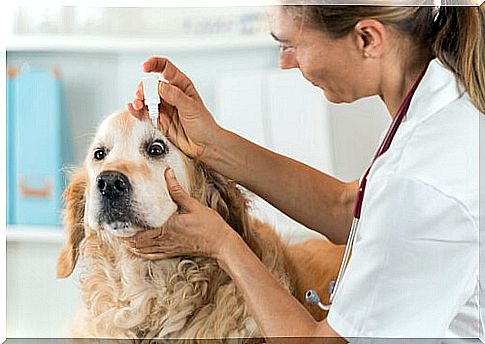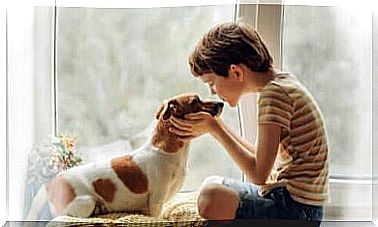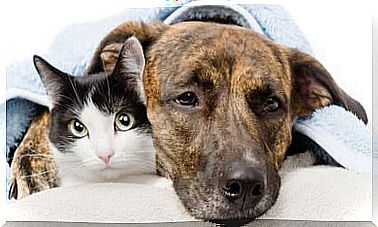Tears In The Dog’s Eyes – Where Does That Come From?

Humans are the only living beings who cry to express their feelings. Your fur nose may get lots of tears from your eyes, but that doesn’t mean this is anything other than a simple physiological response. Sometimes it doesn’t even mean there’s anything wrong with our pet.
Doggy feelings

Just because “man’s best friend” doesn’t cry with joy or sadness, it doesn’t mean that he is unable to express his feelings in other ways. Dogs usually communicate their feelings to us in no uncertain terms.
Dogs use yowling to show sadness, loneliness, pain, and sometimes joy. They whine when they feel physical pain or when they feel uncomfortable. They bark for joy, out of fear, or when they are angry.
Frenetic tail wagging always means maximum pleasure. In isolated cases, however, it can also be associated with anxiety.
If dogs do not eat anything and want to have something to do with the world, then – just like with humans – this is a sign of depression and grief. Through their gaze, our fur noses show us not only their feelings, but also their true state of mind. It doesn’t matter whether you see tears in her eyes or not. They cannot lie and always show whether the animal is sad or happy.
Tears: the eyeballs’ first line of defense
The primary function of tears in dogs is to protect the eyes and keep them moisturized. They will also help remove any foreign object that has lodged near the eyeball.
Sudden weather changes or strong winds are further triggers. In such cases it is not a medical problem. Rather, the tears prove that the dog’s eye defense system is working well.
Problems of certain races
The eyes of certain races water because of their physical characteristics. This includes pedigree dogs that have large eyes compared to their heads, such as the Chihuahua or the Shih Tzu. Dogs that have a lot of fur around their eyes, such as the poodle or the Maltese, also often show increased tear production.
When the tears are a sign that something is wrong
If the eyes water too much and constantly, or if there is not only a clear liquid, then it is time to have the fur nose examined by the vet. This can happen for a number of reasons:
Wounds or foreign objects in the eyes
When a dog or person has a foreign object, such as some dust, in their eye, tears start to form. The same thing happens when the cornea is injured or damaged.
Allergies
Allergies not only produce tears, but also swelling and redness of the eyeball. Sand can also form until the animal sometimes finds it difficult to open its eyes. Frequent sneezing and coughing are other symptoms of an allergy.
Infections
It can be an infection if yellowish or greenish secretions appear in addition to tears and sleeping sand. When infected, both the eyeball and the inside of the eyelids are often irritated.
Conjunctivitis
Conjunctivitis in dogs can have several causes. It can be caused by dry eyes, environmental irritation or even malformation of the eyelids. Conjunctivitis can also be a symptom of a more serious illness, such as distemper or liver inflammation.
What to do if the dog’s eyes water too much?

If your dog’s eyes are showing increased tear formation associated with any of the above symptoms, then you should take them to the vet. The expert will examine the animal first to identify the root of the problem. After that, he will prescribe the appropriate treatment.
While you are waiting for the results of the veterinary exam, there are a number of steps to consider. There are a few tips that will help the pet endure their situation while receiving professional help. These include:
- Wash your eyes with plenty of lukewarm water without rubbing them.
- If there is no wound on the cornea or eyelids, then you can soak some gauze in physiological saline solution or cool chamomile tea from the refrigerator.
- Remove any item that could cause an allergic reaction. This includes air purifiers and other cleaning products.








